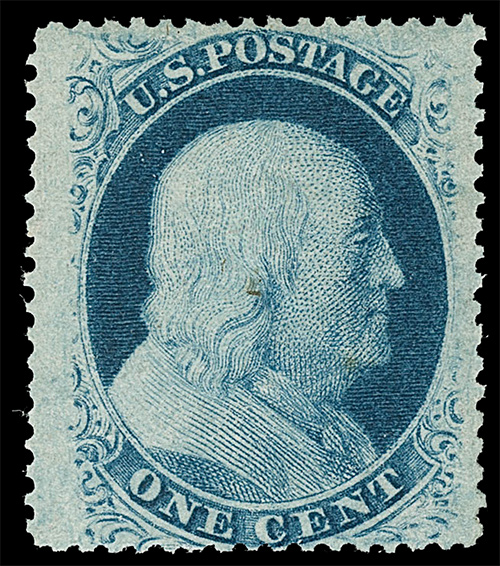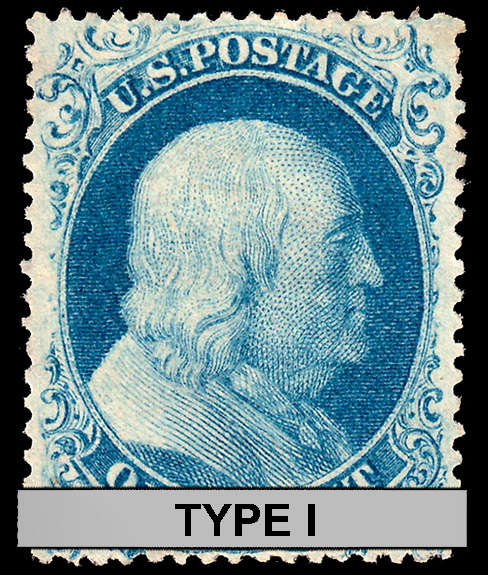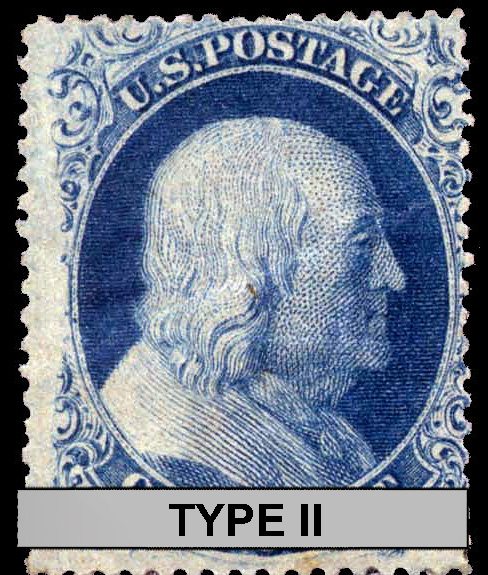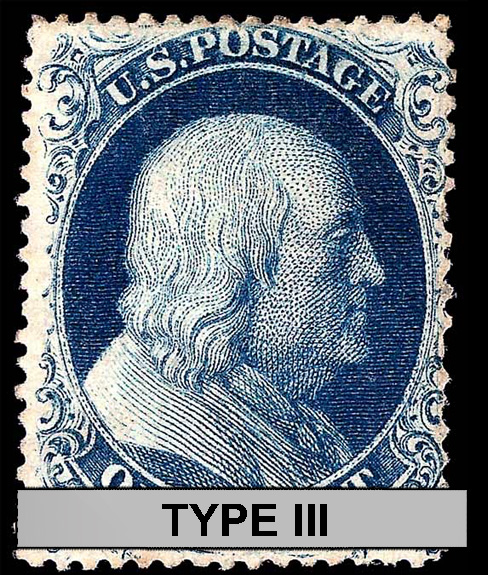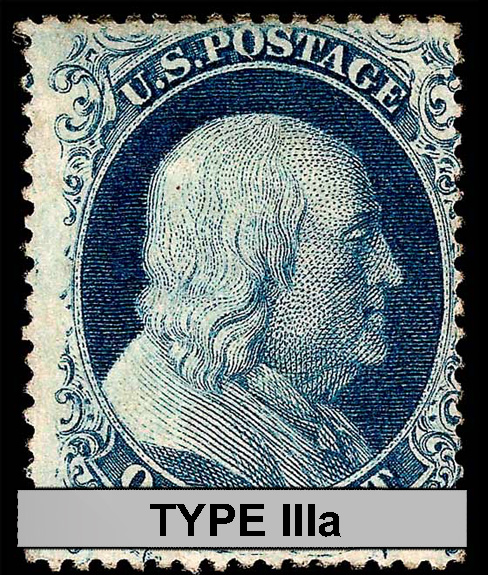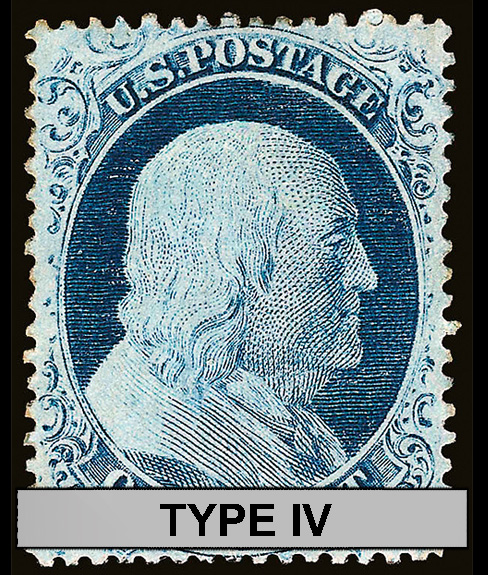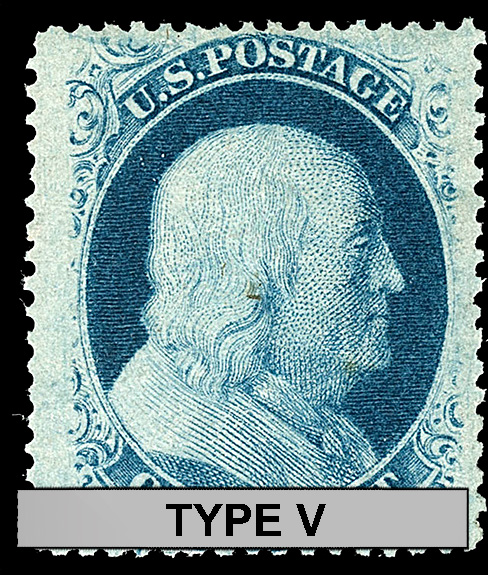Basic Info
1¢
Blue, pale blue, deep blue and dark blue
Printing Method: Die-to-relief-to-plate transfer process
Plate: Plates 5, 6, 7, 8, 9, 10
Printer: Toppan, Carpenter & Co.
Subject: Benjamin Franklin
Number issued: unknown
Perforations: 15 to 15½
Watermark: Unwatermarked
Scott #: 24
Earliest date of use: November 17th, 1857
Value
Used
$1 - $25
No postmark with gum (MH)
$160 - $210
Full perfect gum, no postmark
no trace of stamp hinge mark (MNH)
$300 - $700
Inspiration for the Design
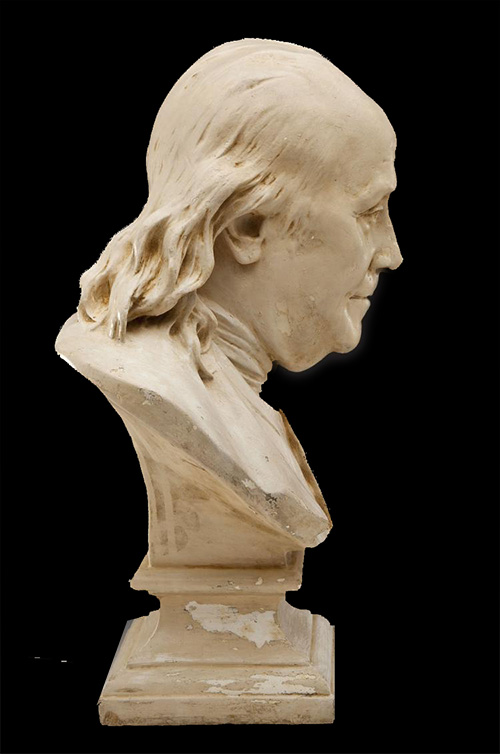
The vignette was based on Giuseppe Ceracchi's 1791 bust of Benjamin Franklin
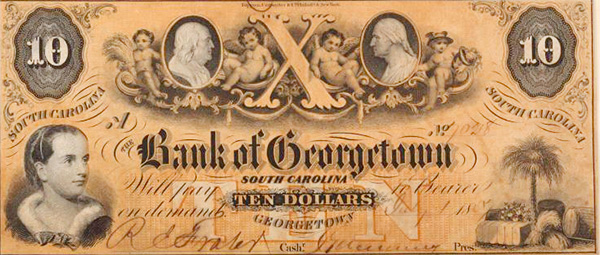
A contemporary banknote printed by Toppan, Carpenter with the same vignette as #24
The Imprint
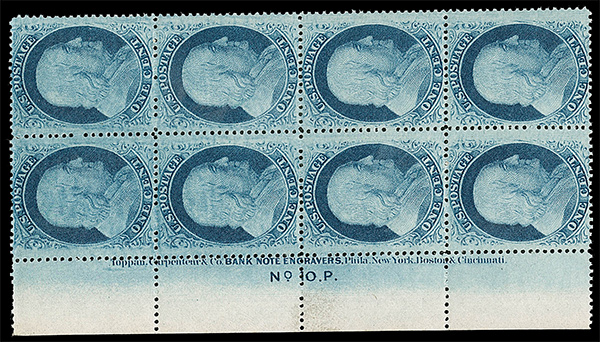
Plate 10 imprint (plates 5 thru 9 were similar)
The Earring Flaw
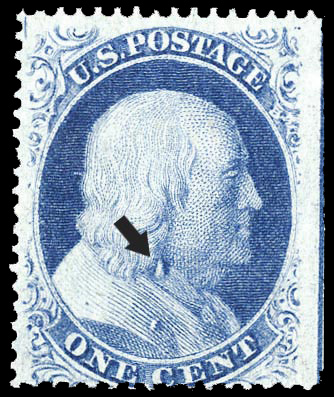
Showing a plate flaw under the ear
Commonly known as the earring flaw.
Position 10-L9
The Ring Flaw
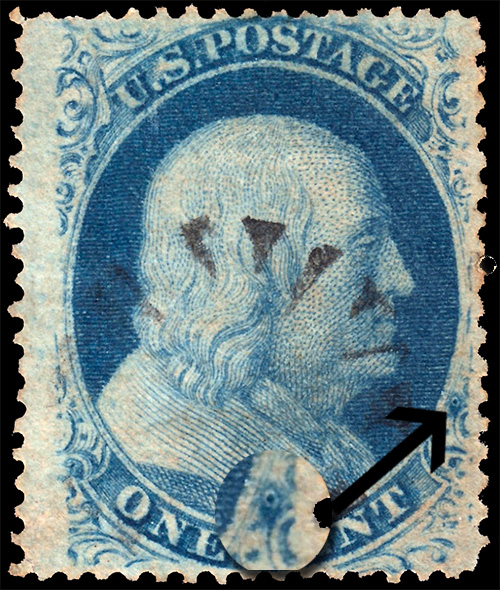
Showing a plate flaw to the lower right of the vignette frame. I have invented the name 'Ring flaw'
Position 38-L9
Notable Sales

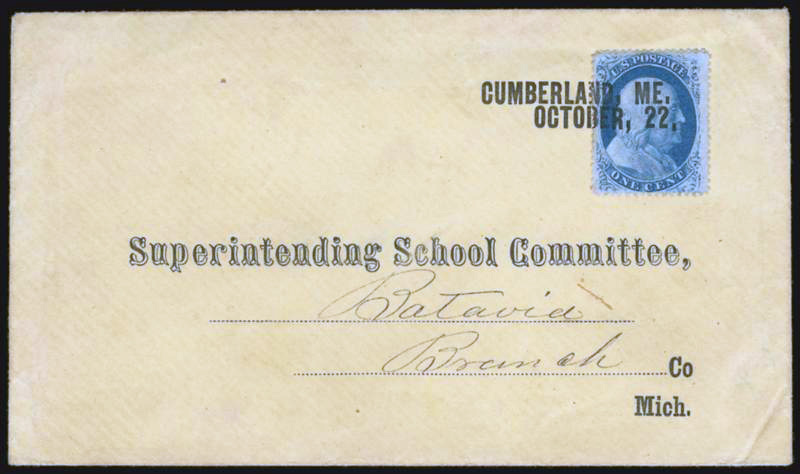
Centered to left, tied by printed "CUMBERLAND, ME./OCTOBER, 15" two-line precancel on yellow part-printed address cover for Superintending School Committee in Penn., manuscript "Upper Dublin" address
ONE OF THREE RECORDED ONE-CENT 1857 ISSUE COVERS WITH THE CUMBERLAND, MAINE PRECANCELLATION. ONE OF THE GREATEST RARITIES OF PRECANCEL COLLECTING AND OF CLASSIC UNITED STATES PHILATELY.
Sold November 2022 for $22,420 (MNH)
Explore Robert Siegel's Auction Galleries
Identifying #24
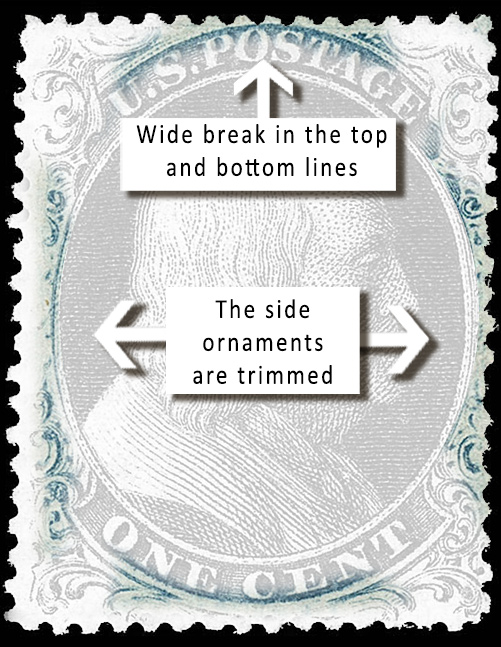
#24 is a type V design. There is a wide break at the top and bottom ornaments and the side ornaments are trimmed.
Type Va
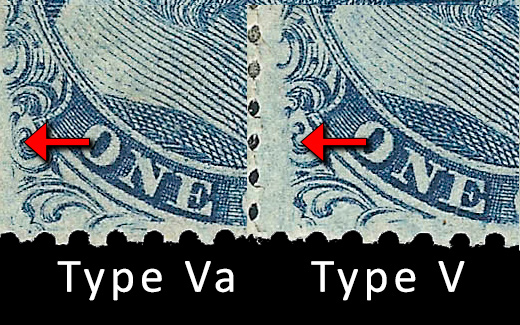
One in a hundred Type V's are type Va. As can be seen by the image above, the ornaments at the side are less cut away on type Va. Type Va came exclusively from plate 5, they are, of course, sold at a considerable price premium.
The first perforated stamps
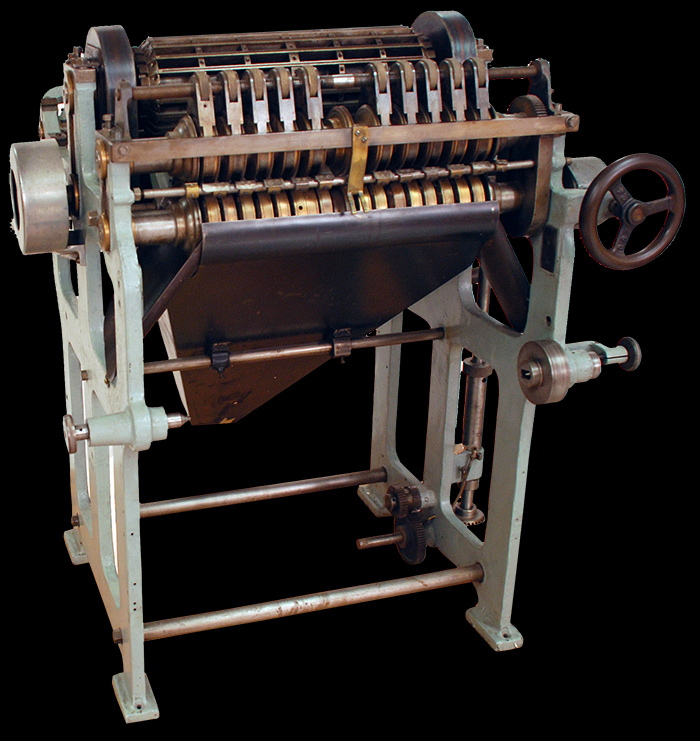
The perforating machine used on the 1857 issue
The idea behind perforating the stamps was to make the stamps easier to separate and apparently to make the stamps adhere better, although I am not sure about the thinking behind that one.
A rouletting machine was purchased from the UK. The only perforating machines were made in the UK and the British Printers, Perkins Bacon, did not want to let one go abroad. A typical British attitude at the time. So the Bureau purchased the rouletting machine. They tried it out and the result was not what they were looking for. To convert the rouletting machine to a perforating machine was as simple as swapping out the rouletting roller with a perforating roller (which had to be designed and produced). Takes less than a minute.
There was one slight problem space allowance to feed the sheets of stamps was kind of narrow. This was solved by squeezing the row of stamps into the narrower space. Something that philatelists who prize four margin stamps will forever regret.
The sheet of stamps was fed in one way to get the vertical perforations, the spacing on the perforator roll was changed and then the sheet was fed through horizontally.
A full pane
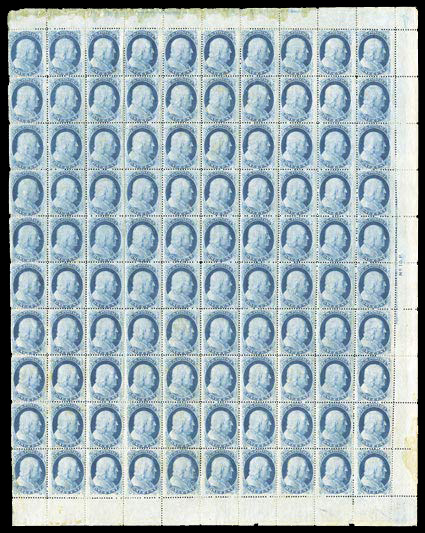
A full pane of 100 of the perforated 1857 1¢ Franklin, there are two panes to a sheet of 200
Forgery
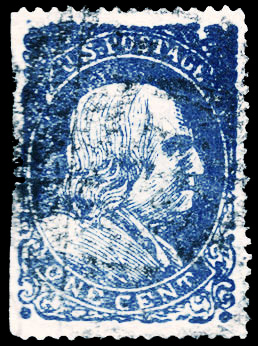
A contemporary forgery of the 1¢ Franklin
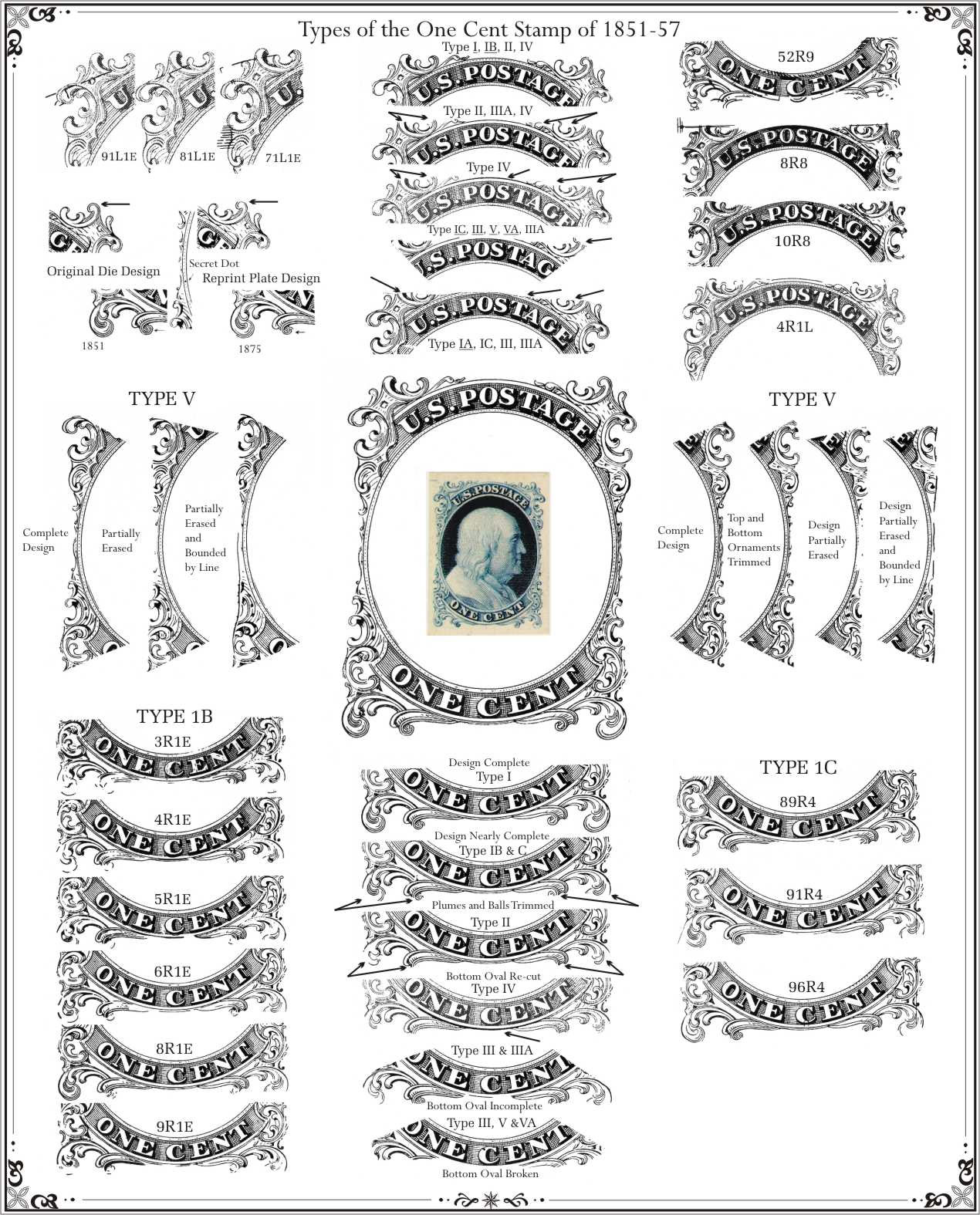
Essay's and Proofs

